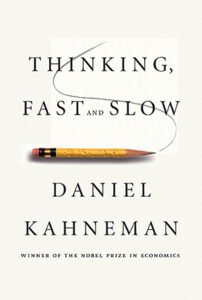|

|
Thinking, Fast and Slow:
Decision makers need a realistic assessment of the costs and benefits of a proposal before making the final decision to approve it.
|
252 |
|
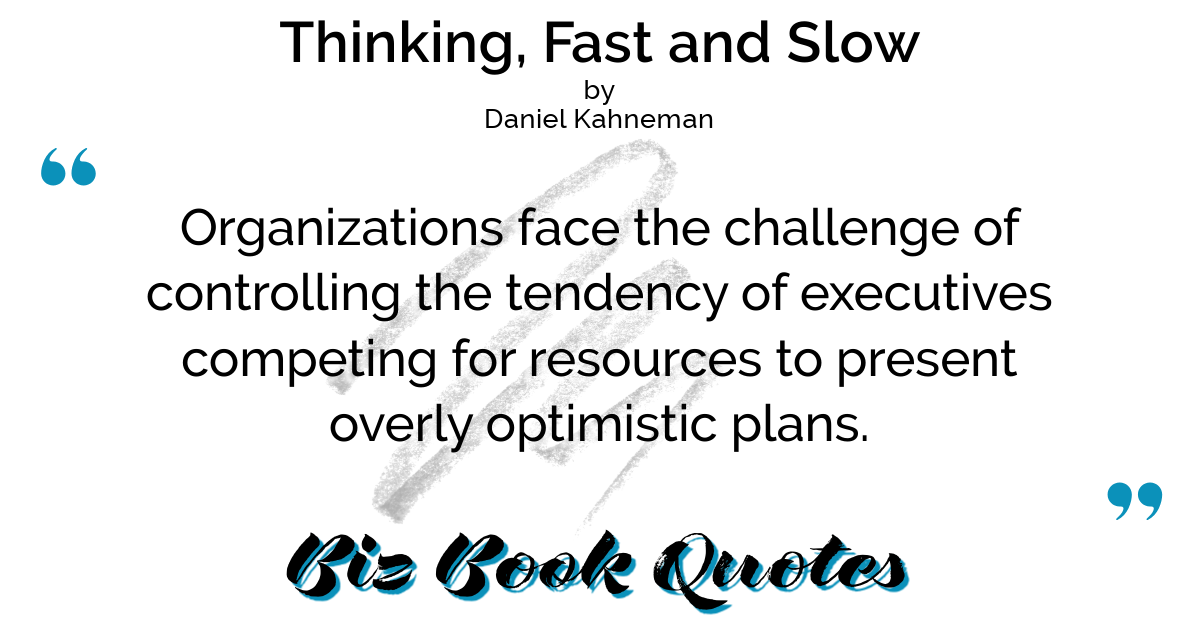
|
Thinking, Fast and Slow:
Organizations face the challenge of controlling the tendency of executives competing for resources to present overly optimistic plans.
|
252 |
|
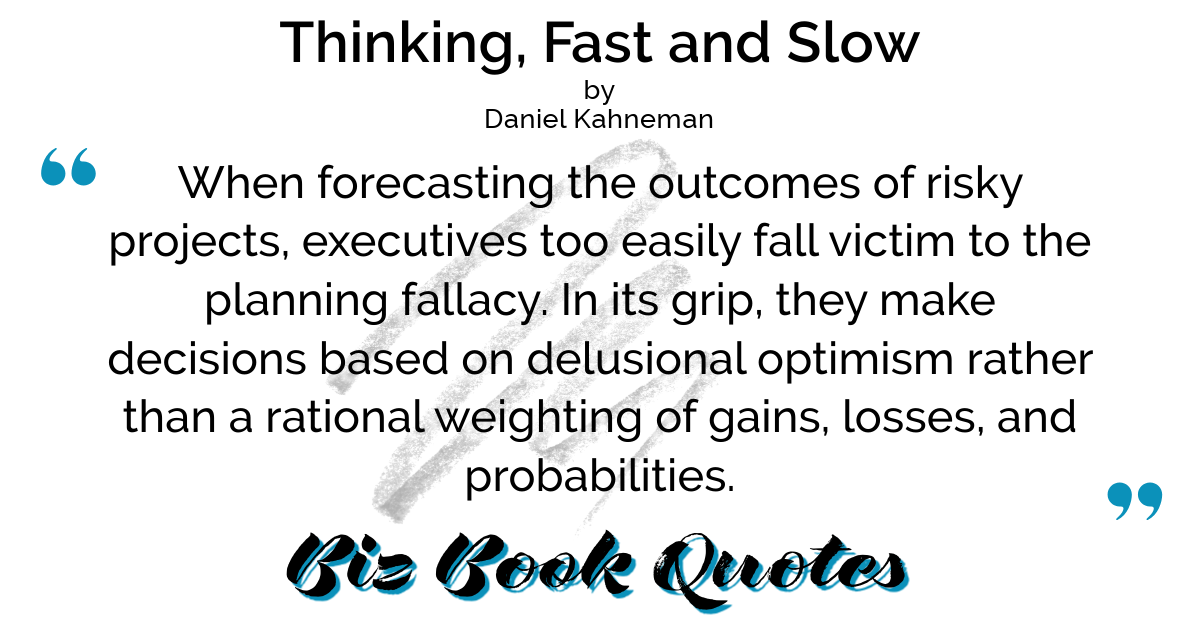
|
Thinking, Fast and Slow:
When forecasting the outcomes of risky projects, executives too easily fall victim to the planning fallacy. In its grip, they make decisions based on delusional optimism rather than a rational weighting of gains, losses, and probabilities.
|
252 |
|
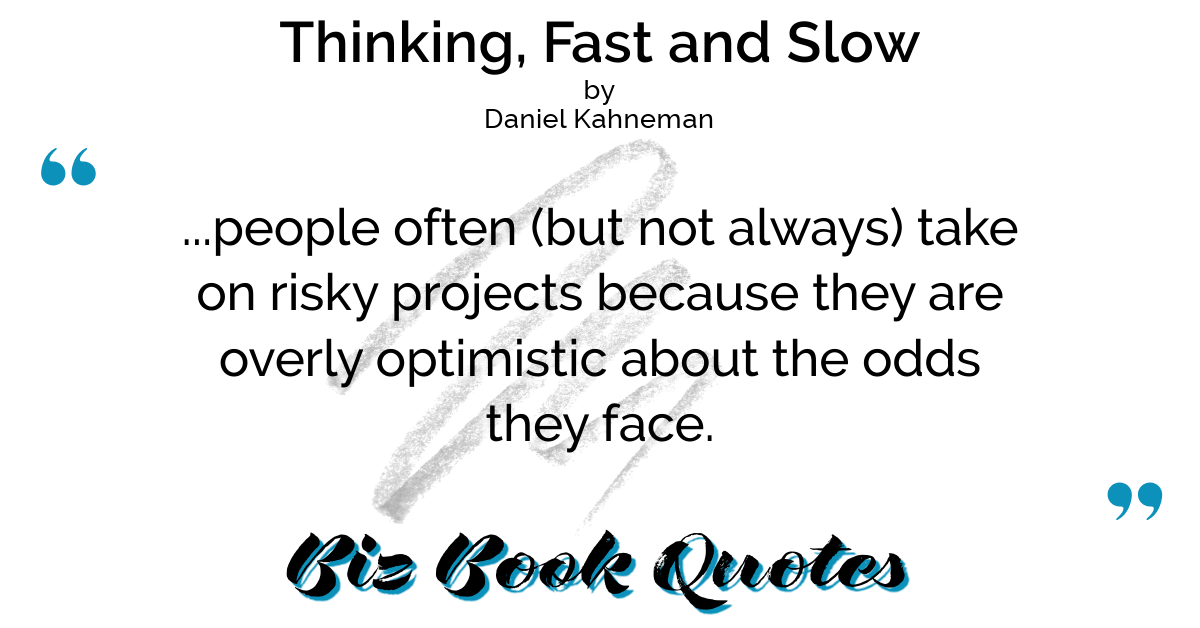
|
Thinking, Fast and Slow:
…people often (but not always) take on risky projects because they are overly optimistic about the odds they face.
|
253 |
|
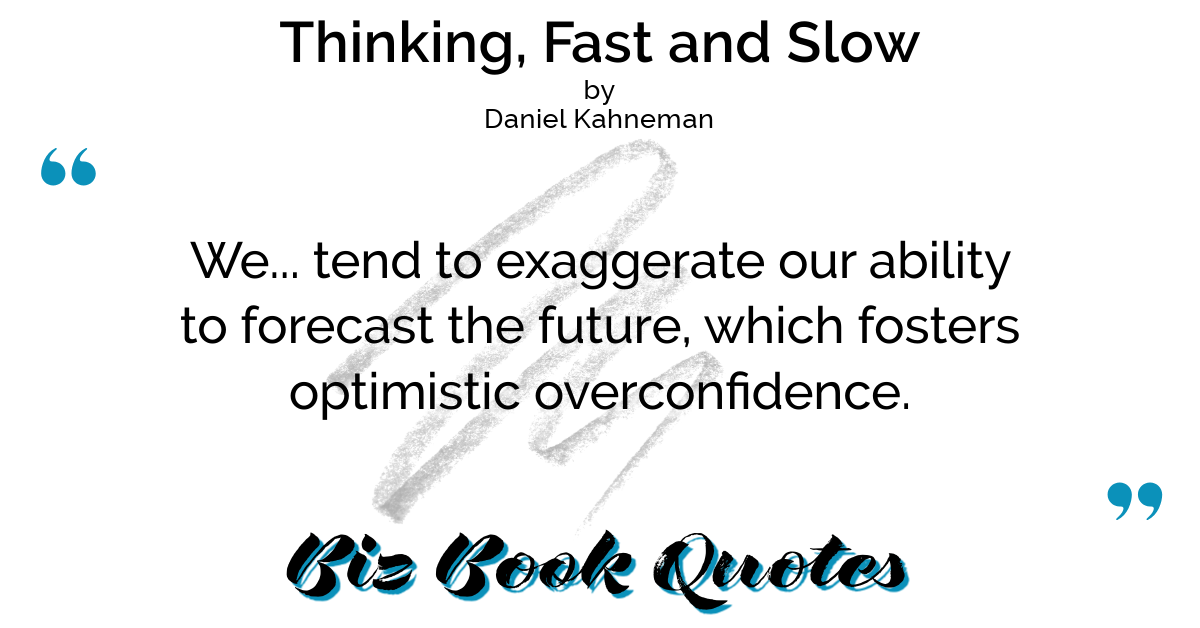
|
Thinking, Fast and Slow:
We… tend to exaggerate our ability to forecast the future, which fosters optimistic overconfidence.
|
255 |
|
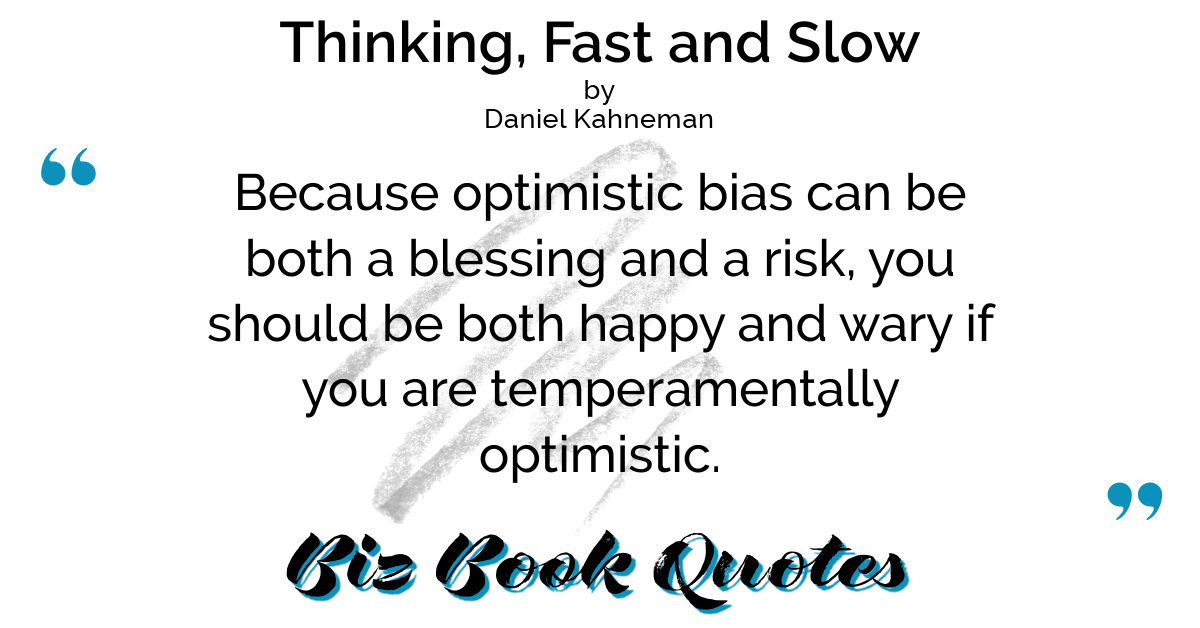
|
Thinking, Fast and Slow:
Because optimistic bias can be both a blessing and a risk, you should be both happy and wary if you are temperamentally optimistic.
|
255 |
|
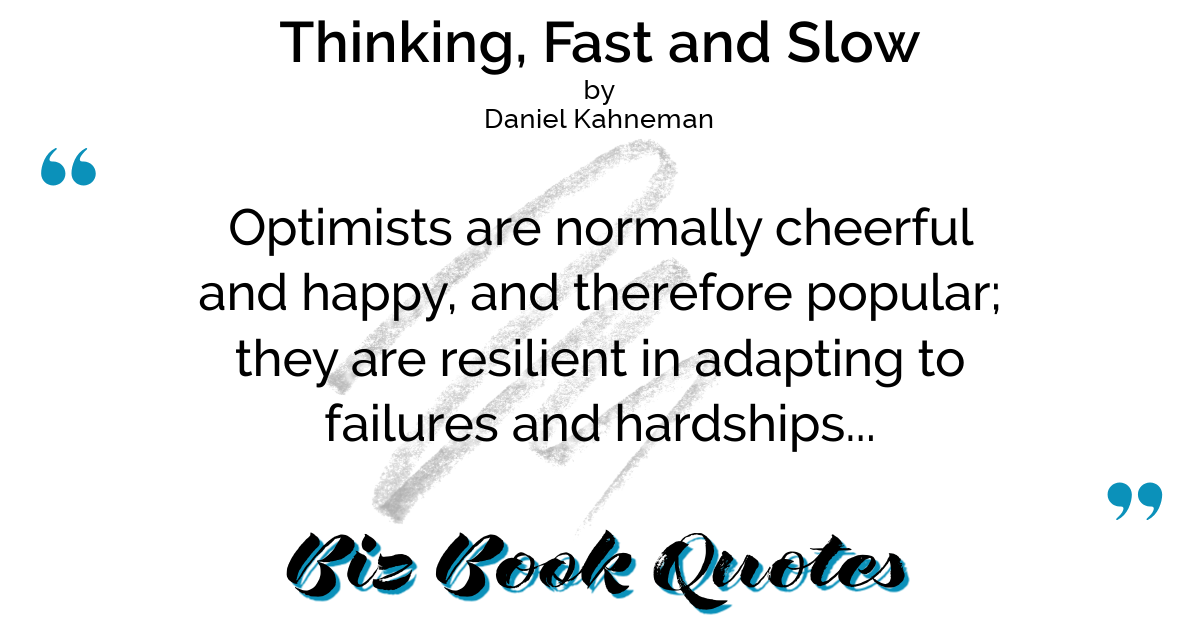
|
Thinking, Fast and Slow:
Optimists are normally cheerful and happy, and therefore popular; they are resilient in adapting to failures and hardships…
|
255 |
|
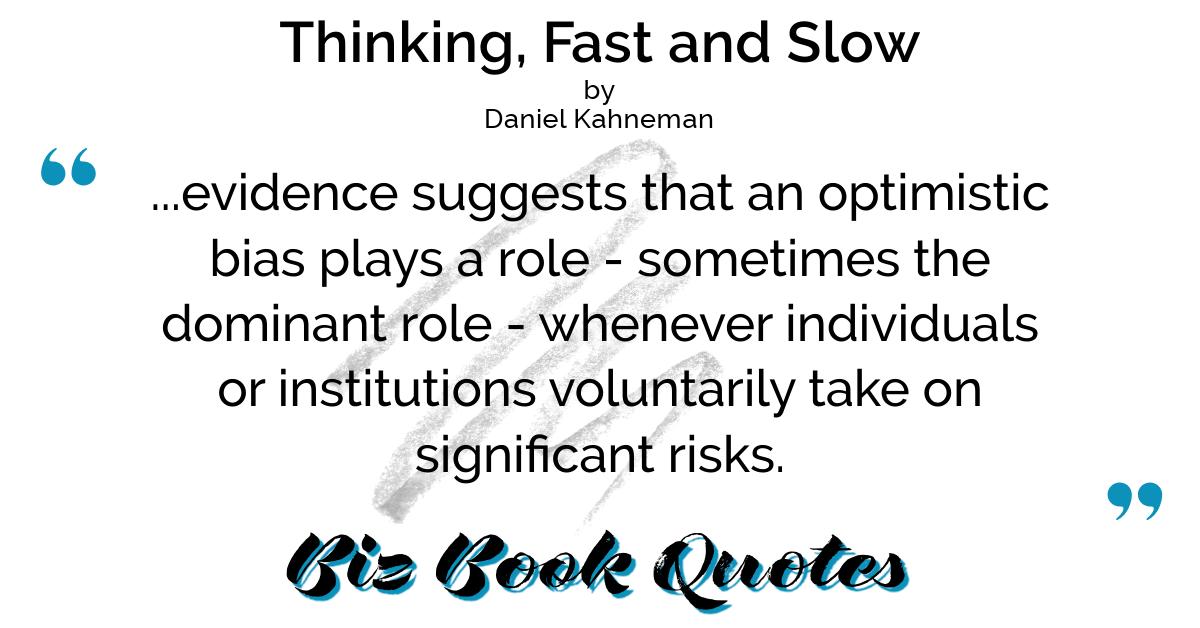
|
Thinking, Fast and Slow:
…evidence suggests that an optimistic bias plays a role – sometimes the dominant role – whenever individuals or institutions voluntarily take on significant risks.
|
256 |
|
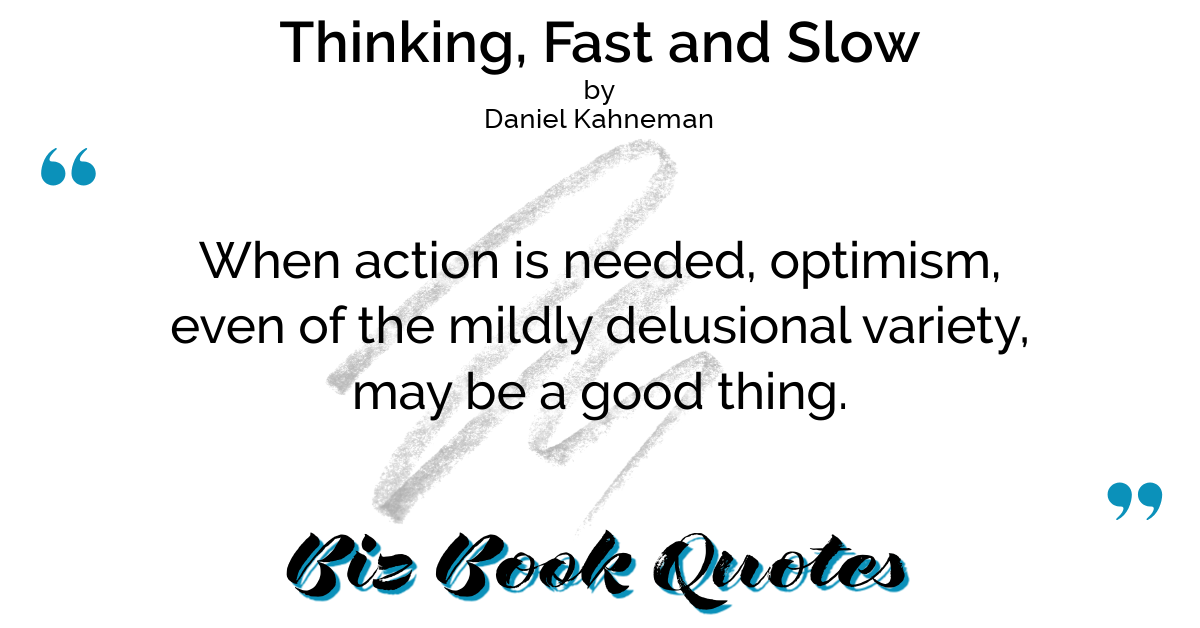
|
Thinking, Fast and Slow:
When action is needed, optimism, even of the mildly delusional variety, may be a good thing.
|
256 |
|

|
Thinking, Fast and Slow:
One of the benefits of an optimistic temperament is that it encourages persistence in the face of obstacles. But persistence can be costly.
|
257 |
